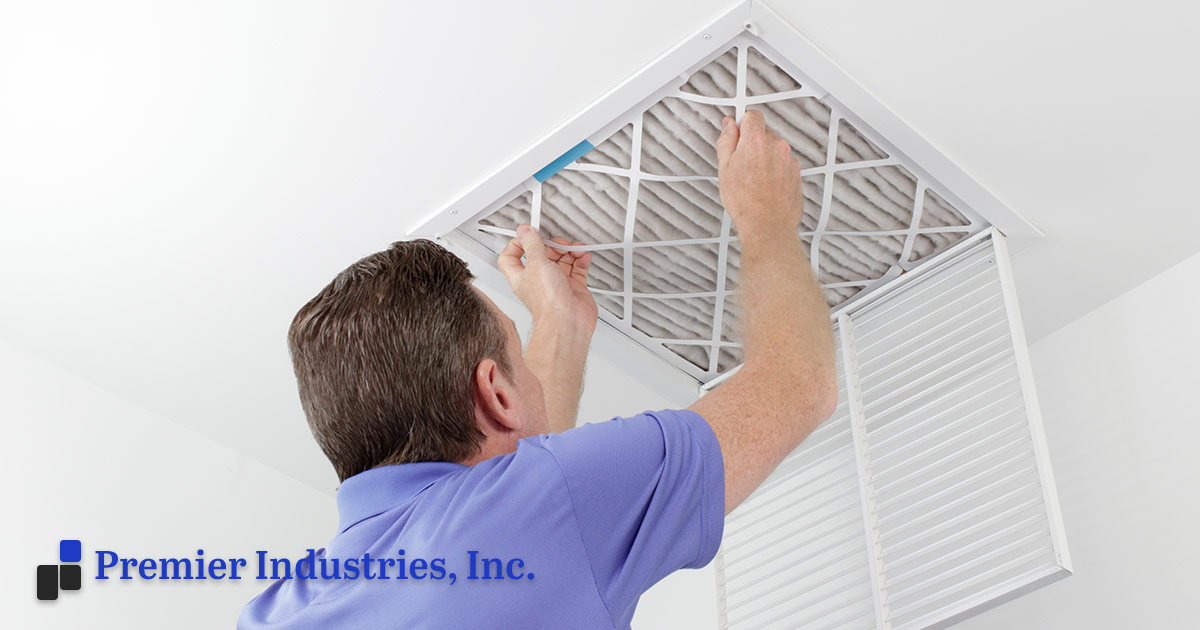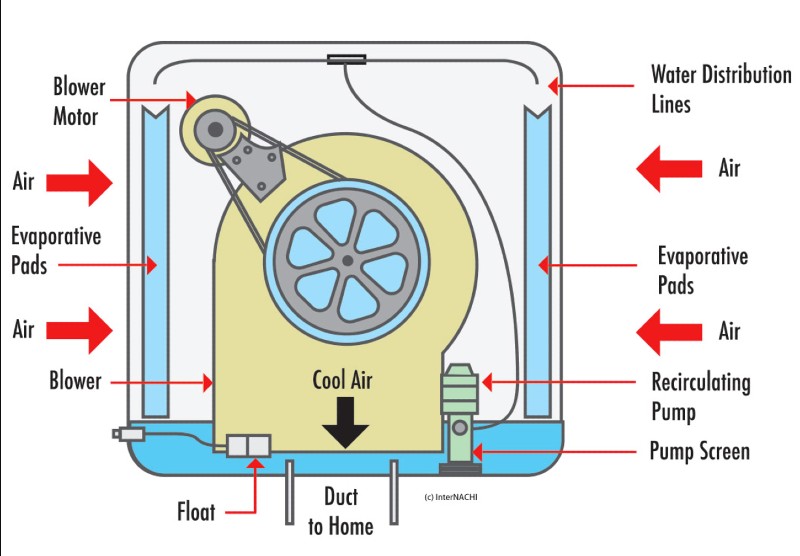
Swamp Coolers, Air Quality & Your Health
August 17, 2020 5:53 pm Leave your thoughtsA comfortable temperature and humidity level are both crucial for maintaining good health and good indoor air quality. Much of the discussion around cooling a home or commercial building understandably centers on costs and effectiveness, but the effect of the cooling system on indoor air is also of concern. Poor air quality is not just a matter of having high levels of smog or smoke; it can be any air quality that makes it harder to function, too. Evaporative coolers, or swamp coolers, may help moderate indoor airflow and could be a great solution if you need better home cooling.
How Evaporative Coolers Move Air
Both swamp coolers and refrigeration-style air conditioning blow cool air into a room, but how the airflow is cooled is very different in each system. Your typical AC pulls in warm airflow from a room, runs it through a system that includes a condenser, which removes moisture, and then blows it back out into the room. Heat is typically vented outside. This constant cycling eventually cools all of the airflow in the room. Evaporative coolers pull warm airflow in from outside, passing it through pads that are kept wet and cool with water, and then they send the cool airflow back out into the room. Heat is also typically vented outside, but in some systems, you can control the overall temperature by keeping some windows open and some closed, which means warm airflow can still flow in from outside.

How Is Indoor Air Quality Affected by Swamp Cooling Technology?
Because swamp coolers rely on bringing in outside airflow to be cooled, the amount of fresh airflow circulating into the home is increased tremendously. Indoor air qualities can be very poor when you keep a building closed up; increased humidity, as well as dust and other allergens, can reach unhealthy levels if fresh airflow can’t circulate. Excessive humidity or excessively dry conditions, too, are a form of poor quality. When a swamp cooler brings in airflow from the outside and allows it in the home to vent outside, the quality indoors can improve.
It should be noted, however, that if the atmospheric conditions outside is already bad, then swamp coolers may not change much indoors. For example, if you have severe pollen allergies, then you need to keep your windows closed during the season when that pollen is present, which could affect the operation of swamp coolers that rely on open windows. Evaporative cooling is also less effective if the temperature inside the home is already very humid because evaporative coolers add humidity. The increased humidity makes it harder for cooled airflow to truly feel cool.
Is There Any Risk of Poor Air Quality Coming From a Swamp Cooler?
A properly working swamp cooler itself will not add to poor quality just by operating in good conditions. However, they can introduce poor air quality into the home. As already mentioned, a swamp cooler can increase humidity levels, which degrade quality if the airflow indoors is already moist. Also, if there is a problem with the airflow outside, such as wildfire smoke, smoke from cigarette smokers nearby, barbecue smoke, dust, and so on, then the evaporative cooling system could pull some of that pollution into the home. Whole-house swamp coolers have filters, but they often don’t remove very fine particulates, which can allow some pollutants to get inside. In fact, if you live in an area where smoke or other external air problems are present, like smog, you should make sure that any swamp cooling technology you install has a good filtration system. Even if it doesn’t remove all particulates, it will remove some, which is more than helpful on a very hot day.
What Can Be Done to Maintain Good Air Quality From Evaporative Cooling?
Keeping those filters in good shape (and getting filters that remove as much pollen, dust, and other particulates from the atmosphere as possible) is really the best way to preserve good indoor quality when using a swamp cooler. The unit you have installed should also have an extraction system, which whisks heat and moisture outside without you having to open windows. If you can keep windows closed while using the system — again, because of high pollen counts, wildfire smoke, dust, and other outdoor problems — then you can reduce the amount of poor airflow that enters the home through the swamp cooling system.
Evaporative coolers are more cost-efficient and work very well in dry regions like Arizona. With a good filtration system and external extraction, you can keep your home cool and comfortable during Arizona’s scorching hot summers. Contact Premier Industries, Inc., to discuss how swamp cooling could benefit you and potentially reduce your utility bills.
Categorised in: Air Coolers
This post was written by Mike Nicolini
